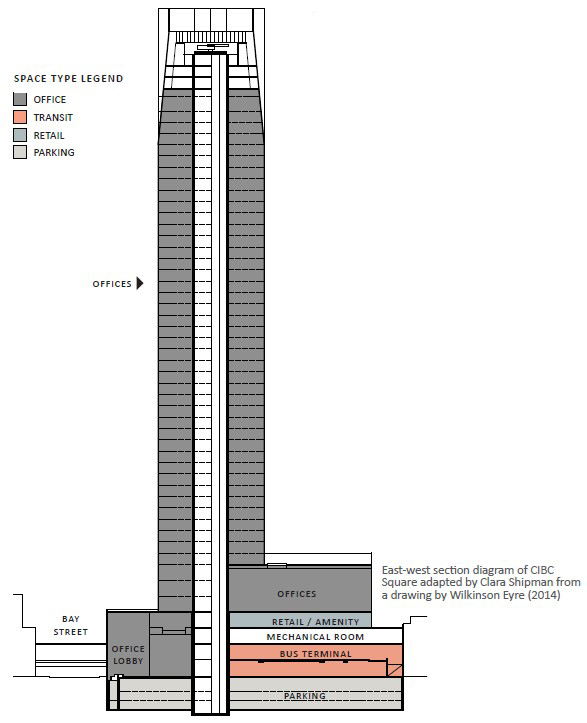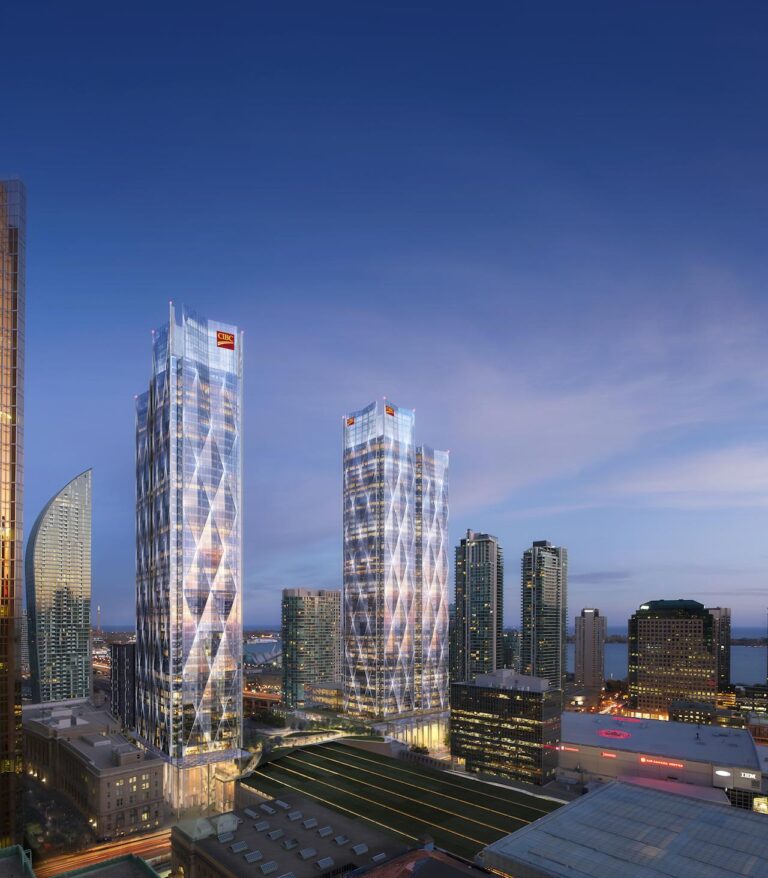CIBC Square / GO Bus Commuter Terminal (Union Station)
132 Queens Quay East, Toronto, Ontario
Type: New construction
Size: 2,90,000 sf
Project Cost: $2,106 million
Development Partners:
- Ivanhoe Cambridge
- Hines
- Metrolinx
- City of Toronto
- Government of Ontario
Status: Opened in 2021 (81 Bay St.), Phase 2 anticipated for completion in 2024
Description
CIBC Square / GO Bus Commuter Terminal (Union Station) is a new transit hub which includes a bus station within a two-building office development project. Built in two phases, it includes retail, office towers, underground parking and a landscaped, one-acre elevated ‘sky park’ over the rail corridor that connects the two buildings at the fourth floor level. Each building features 49 floors of office and collaborative spaces designed to exemplify innovation, connectivity and sustainability. The project include CIBC’s new world headquarters in Toronto.



Complexity / Collaboration
A complex aspect was determining how to successfully integrate a bus terminal into a ‘Class A’ office building. It took three years once talks officially began between the developer and Metrolinx – i.e. the regional transit agency that operates GO Transit and will manage the bus terminal – before each partner determined that they could do the project and work out logistics. The developers main concern had to do with design: in thinking about the office tenants they wanted to attract, want the project to feel like a bus terminal, and vice versa.
User Interaction/Partnership Framework
The project is the result of a joint effort between Ivanhoé Cambridge and Hines, two global real estate leaders, who entered into a co-ownership agreement to develop and manage CIBC Square as equal partners and investors. In 2007 Ivanhoé Cambridge acquired 81 Bay Street (formerly 45 Bay and used as a parking lot) followed by a series of subsequent acquisitions of additional land and air rights over the rail corridor. Metrolinx sold its property at 141 Bay in exchange for a long-term 99-year lease of the new bus terminal at the base of the office development planned. The develop- ment gives Metrolinx needed expanded capacity by integrating it with with PATH and with Union station. It is expected to offer a 50 per cent increase in bus capacity. An additional advantage is that the terminal will move south of the train tracks, allowing access to double-decker buses which were previously blocked by a bridge.
Costs / Funding
The cost to Mextrolinx for the new terminal is set at more than $106-million, with at least $30-million of that coming from the sale of the site of the current terminal. The remainder will come from Metrolinx’s capital budget.
Questions?
If you’d like more details on our case studies, please contact us at infrastructure@utoronto.ca